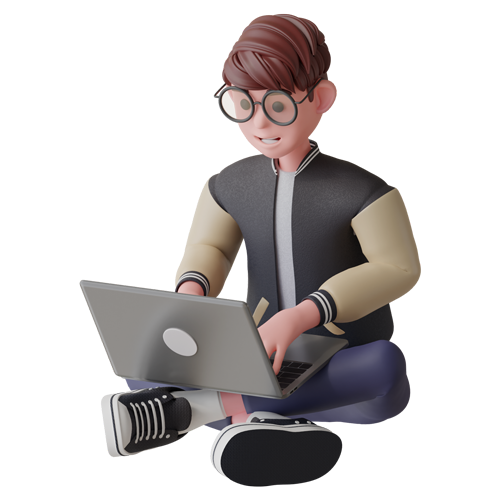Animation has become an essential tool for storytelling, marketing, entertainment, and education. Whether you are a business owner looking to promote your brand, a content creator aiming to engage your audience, or a filmmaker bringing characters to life, one of the first decisions you will face is whether to use 2D or 3D animation. Both styles have unique strengths, creative possibilities, and practical considerations, and understanding the differences can help you make the best choice for your project.
What is 2D Animation?
2D animation refers to animation created in two-dimensional space. In this style, characters, objects, and backgrounds are designed using width and height but lack depth. Traditional hand-drawn cartoons are classic examples of 2D animation, but modern techniques often use software like Adobe Animate, Toon Boom Harmony, or After Effects.
Key Features of 2D Animation
-
Flat and Stylized Visuals:
2D animation is ideal for simple, stylized visuals that focus on movement and expression rather than realistic depth. -
Storytelling and Simplicity:
The style allows for expressive storytelling and is particularly effective for explainer videos, tutorials, and marketing content. -
Cost-Effective:
Generally, 2D animation is less resource-intensive than 3D, making it a more budget-friendly choice for small businesses or startups. -
Faster Production Time:
Since it doesn’t require complex modeling or rendering, 2D animation can be produced relatively quickly, allowing for faster project turnaround. -
Versatility:
2D animation can easily adapt to various formats such as social media videos, infographics, advertisements, and educational content.
What is 3D Animation?
3D animation involves creating characters, objects, and environments in three-dimensional space. This style allows for realistic depth, shadows, lighting, and textures, providing a lifelike and immersive visual experience. 3D animation is widely used in films, video games, virtual reality, and high-end advertisements. Software like Autodesk Maya, Blender, and Cinema 4D are commonly used to create 3D animations.
Key Features of 3D Animation
-
Realism and Depth:
3D animation can create lifelike visuals with realistic movements, textures, and lighting effects. -
Immersive Experience:
The added depth allows viewers to engage more deeply, making it suitable for cinematic storytelling and video games. -
Complex Movements:
3D animation enables intricate movements, camera angles, and dynamic simulations that are challenging to achieve with 2D. -
High Production Value:
3D animation gives a premium, polished look, which is why it is often used in major films, product visualizations, and high-budget marketing campaigns. -
Flexibility for Iteration:
Once a 3D model is created, animators can easily adjust camera angles, lighting, and movements without redrawing frames, making it more flexible for revisions.
Key Differences Between 2D and 3D Animation
When deciding between 2D or 3D animation, consider these main differences:
-
Visual Style: 2D is flat and stylized, while 3D is realistic and immersive.
-
Production Cost: 2D is generally more affordable; 3D can be expensive due to complex modeling and rendering.
-
Time and Resources: 2D projects are quicker to produce, whereas 3D requires more time and technical expertise.
-
Application: 2D suits storytelling, tutorials, and ads. 3D is ideal for films, games, virtual reality, and product demonstrations.
-
Audience Experience: 2D delivers simple, engaging visuals. 3D delivers realistic and dynamic experiences.
When to Choose 2D Animation
2D animation is often the preferred choice in situations like:
-
Explainer Videos: 2D can simplify complex concepts and make them easy to understand.
-
Marketing Campaigns: Its stylized visuals can create memorable, branded content.
-
Educational Content: Simple characters and clear graphics help retain viewers’ attention.
-
Budget Constraints: If you have a smaller budget or shorter timeline, 2D is cost-effective and efficient.
When to Choose 3D Animation
3D animation shines in projects that require depth, realism, and cinematic quality:
-
Feature Films and Animated Series: 3D brings characters and worlds to life with rich detail.
-
Video Games: Realistic models and dynamic movements enhance the gaming experience.
-
Product Visualization: 3D allows customers to see products from every angle, improving engagement.
-
Virtual Reality and Interactive Media: 3D creates immersive environments that 2D cannot replicate.
Hybrid Animation: The Best of Both Worlds
Some projects benefit from combining 2D and 3D animation. For example, a 2D character might interact in a 3D environment, or a 3D scene might include 2D overlays for stylistic emphasis. Hybrid animation allows creativity and flexibility while leveraging the strengths of both styles.
How Vozo Animation Can Help
At Vozo Animation, we specialize in both 2D and 3D animation services. Our expert team understands that every project is unique and helps clients choose the right animation style based on their goals, audience, and budget. From explainer videos and advertisements to cinematic productions and product demos, we deliver visually compelling animations that leave a lasting impression.
By working closely with our clients, we ensure that the animation style aligns with their brand identity and communication objectives. Whether you need the simplicity and clarity of 2D animation or the depth and realism of 3D animation, Vozo Animation brings your vision to life with precision and creativity.
Conclusion
Choosing between 2D or 3D animation depends on your project’s objectives, budget, timeline, and desired visual style. 2D animation is perfect for clear, engaging storytelling, educational content, and marketing campaigns, while 3D animation is ideal for immersive experiences, realistic visualizations, and high-end productions.
By understanding the unique strengths of each animation style, you can make informed decisions that enhance your content, captivate your audience, and achieve your creative goals. Partnering with a professional animation studio like Vozo Animation ensures your project is executed flawlessly, whether you choose 2D, 3D, or a hybrid approach.

